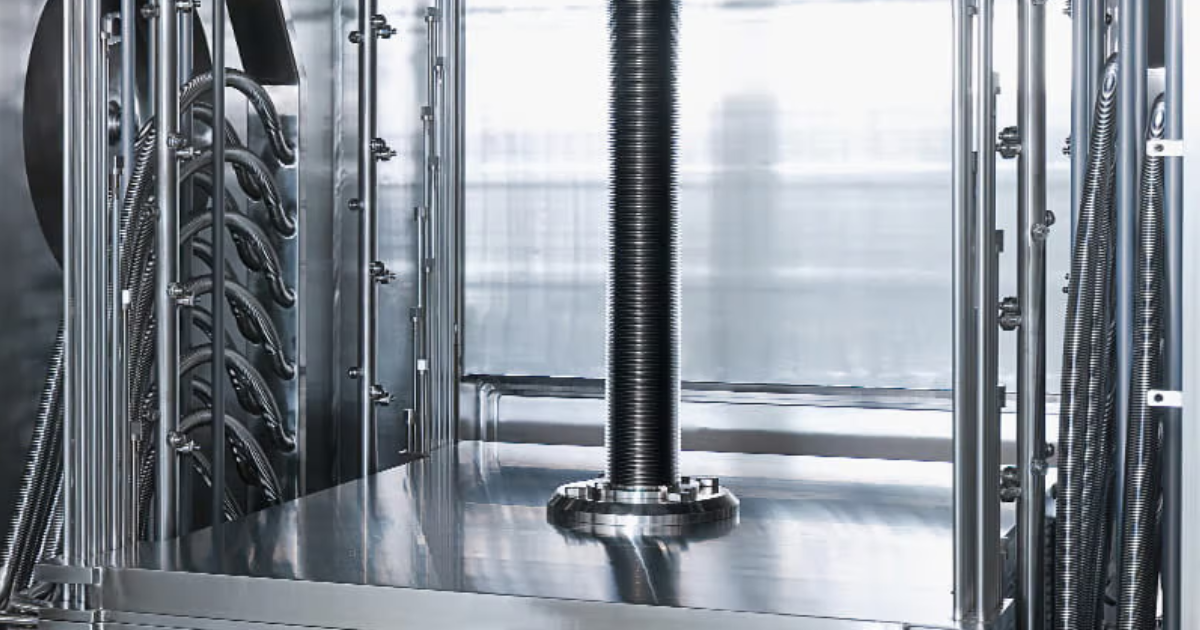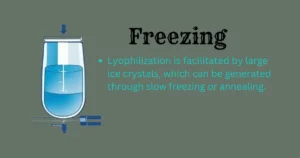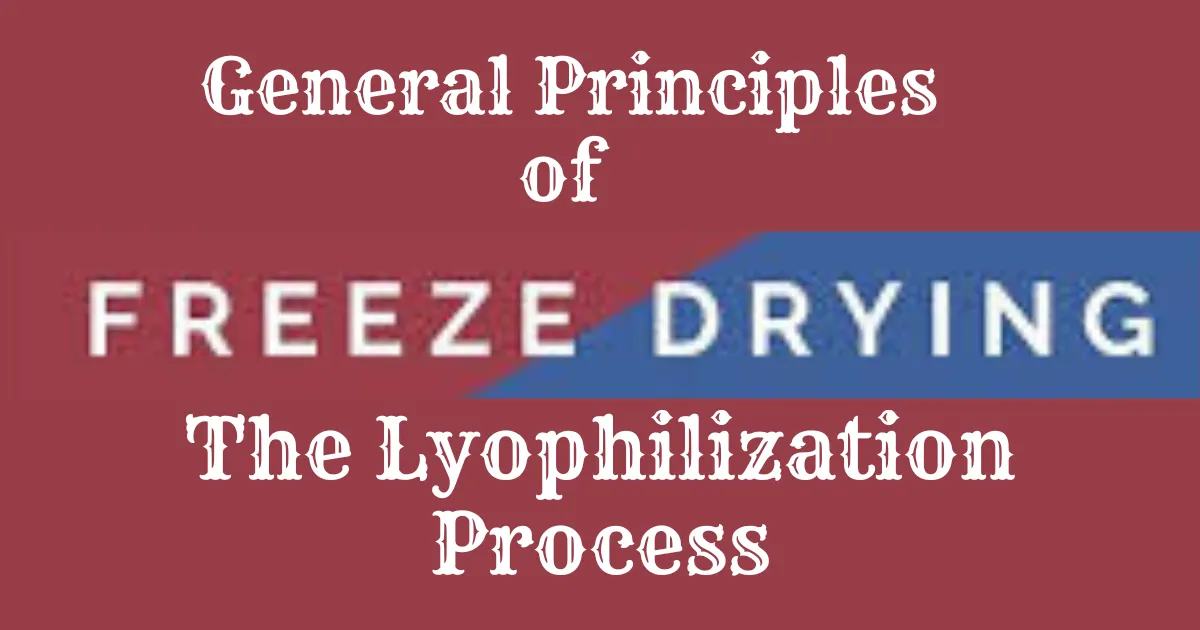Freeze drying, also known as lyophilization, is a crucial process in various industries, particularly in pharmaceuticals, biotechnology, and food preservation. This article delves into the general principles of freeze drying, providing an in-depth understanding of the process, its stages, and its applications. Let’s explore how lyophilization works and why it’s so important.
Key Takeaways
- Lyophilization, or freeze-drying, is a complex yet highly effective process for preserving a wide range of products.
- The lyophilization process consists of three distinct phases: freezing, primary drying (sublimation), and secondary drying (adsorption).
- Understanding the principles of lyophilization is crucial for industries such as food preservation, cryopreservation, and pharmaceutical manufacturing.
- Recent research has explored the impact of freezing and drying conditions on the quality and characteristics of freeze-dried products.
- Advancements in freeze-drying equipment, including refrigeration systems, vacuum pumps, and control systems, have improved the efficiency and reliability of the lyophilization process.
What is freeze-drying (lyophilization)?
Freeze drying, or lyophilization, is a dehydration process typically used to preserve perishable materials, making them more convenient for transport and storage. It involves freezing the product, lowering the surrounding pressure, and then extracting the ice by sublimation, which converts the ice directly into vapor without passing through the liquid phase.
The Importance of Freeze-Drying
Freeze drying is essential for preserving the quality, potency, and stability of products. It is widely used in the pharmaceutical industry for the production of vaccines, biologics, and other sensitive formulations. In the food industry, freeze drying helps maintain the nutritional value, taste, and texture of food products.
The Freeze Drying Process: An Overview
1. Freezing
The first step in the freeze-drying process is freezing the product. This is crucial because it ensures that the water in the product forms ice crystals, which can later be removed by sublimation.

Freezing: A material changes from a liquid to a solid state during freezing. This transition occurs when the liquid’s molecules slow down enough to be arranged into a solid form with definite places by their attraction forces
Key Considerations in Freezing
- Rate of Freezing: The rate at which the product is frozen affects the size and shape of the ice crystals formed. Rapid freezing creates small ice crystals, while slow freezing leads to larger ones.
- Temperature Control: Precise control of the freezing temperature is essential to avoid damaging the product’s structure.
Process parameter of freezing during lyophilization
This table outlines the stepwise temperature and time control during the freezing phase of the lyophilization process. Controlled freezing is crucial to ensure uniform ice crystal formation, which directly affects sublimation efficiency and product structure.
| Freezing Phase | Time | Temperature |
|---|---|---|
| Freezing | 30 minutes | 5.0 °C |
| Freezing | 65 minutes | -48.0 °C |
| Freezing | 120 minutes | -48.0 °C |
| Freezing | 35 minutes | -22.0 °C |
| Freezing | 245 minutes | -22.0 °C |
| Freezing | 88 minutes | -48.0 °C |
| Freezing | 245 minutes | -48.0 °C |
📊 Explanation of Each Step in the Freezing Process
🔹 Step 1: Initial Freezing (30 minutes at 5.0 °C)
This pre-conditioning phase helps stabilize the product before deeper freezing begins. It reduces thermal shock and avoids the rapid formation of small ice crystals, ensuring better structural integrity later in the cycle.
🔹 Step 2 & 3: Deep Freezing (65 & 120 minutes at -48.0 °C)
A quick drop to sub-zero temperatures initiates strong ice crystal formation. This stage solidifies the product and sets the groundwork for effective sublimation during the primary drying phase.
🔹 Step 4 & 5: Annealing Phase (35 & 245 minutes at -22.0 °C)
During this stage, the product is deliberately warmed to allow existing ice crystals to grow larger. Larger crystals improve pore structure, which in turn boosts vapor flow and drying efficiency.
🔹 Step 6 & 7: Re-freezing or Hold at -48.0 °C (88 & 245 minutes)
Here, the product is either re-frozen after annealing or held steadily at low temperatures. This ensures a uniform ice matrix is preserved before entering primary drying, reducing the risk of variability or product collapse.
✅ Why This Freezing Profile Matters:
- Prevents product collapse during drying.
- Ensures consistent pore size for vapor flow.
- Enhances final product stability and appearance.
- Supports cycle repeatability and scale-up.
2. Primary Drying (Sublimation)
During primary drying, the pressure is reduced, and heat is applied to the product. This causes the ice to sublimate, transforming directly from solid to vapor.
Primary Drying (Sublimation): Pressure is lowered, and heat is added to allow the ice to sublimate directly into vapor. During the primary drying phase, water vapor adheres to and solidifies on the cold condenser surface, protecting the vacuum pump from moisture. Approximately 95% of the material’s water content is removed during this slow process.
Key Considerations in Primary Drying
- Vacuum Pressure: Maintaining the correct vacuum pressure with a vacuum pump is crucial for efficient sublimation.
- Heat Input: Controlled heat through silicon oil input ensures that the ice sublimates without melting the product.
Primary drying Temperature during Lyophilization
The drying pressure during sublimation was set and regulated by a capacitive manometer at 0.133mbar (hPa) for 10minutes, 0.067mbar (hPa) for 41,8 hours after 41,8 hours the pressure was set and regulated at 0,05 mbar for 20minutes The temperature after secondary drying was 25 °C at pressure was set and regulated by a capacitive manometer at 0.133mbar for I Ominutes. Shelf temperature was set and regulated with following recipe
Primary drying Shelf Temperature and time
| Shelf temperature | Time |
| -45.0 °C | 10 minutes |
| -45.0 °C to -30 °C | 30 minutes |
| -30 °C | 20 minutes |
| -30 °C to -10 °C | 200 minutes |
| -10 °C | 120minutes |
| -10 °C to 10°C | 200minutes |
| 10°C | 4 hours |
| 10°C to 40°C | 2 hours |
| 40°C | 11hours 35 minutes |
3. Secondary Drying (Desorption)
The secondary drying phase removes any residual water molecules bound to the product. This phase involves gradually increasing the temperature to drive off the bound moisture.
Secondary Drying (Desorption): Remaining moisture is removed by further lowering pressure and raising temperature. or Water desorption from the cake starts in the same spot as primary freeze-drying is finished and all ice has been removed via sublimation. The primary drying phase is when this stage, called secondary drying, begins.
Key Considerations in Secondary Drying
- Temperature Ramping: The temperature should be slowly increased by the silicon oil on the shelf to prevent damaging the product; heating should be increased with the help of a heater.
- Final Moisture Content: The goal is to achieve a product with minimal moisture content, ensuring long-term stability. the moisture content detection with the help of karlfischer titration method to determine the water content in the freeze-dried product
| Freeze-Drying Phase | Key Characteristics |
|---|---|
| Freezing |
|
| Primary Drying (Sublimation) |
|
| Secondary Drying (Adsorption) |
|
Applications of Freeze Drying
Pharmaceuticals and Biotechnology
For the application of pharmaceuticals, freeze drying is used to stabilize complex formulations, including anticancer drugs (Bortezomib 3.5 mg, 2.5 mg, and 1 mg; Melphalan HCL; Gemcitabine 1 gm; Pemetrexed 100 mg), vaccines, proteins, and other biologics. It ensures that these products remain effective and safe during storage and transportation.
Food Industry
Freeze drying in the food industry helps preserve the taste, texture, and nutritional value of various food products, such as fruits, vegetables, and coffee. It also extends the shelf life of these products without the need for refrigeration.
Cosmetics and Personal Care
Freeze drying is used in the cosmetics industry to create lightweight, stable formulations. It helps preserve the integrity of active ingredients in skincare and beauty products.
Advantages of Freeze Drying
- Preservation of Quality: The advantages of the freeze-drying process are that it preserves the physical and chemical properties of the product, maintaining its quality over time.
- Extended Shelf Life: Freeze-dried products can be stored for a long time without spoiling.
- Maintained Quality: Texture, flavor, and color are preserved.
- Lightweight: Reduced weight makes transportation easier and more cost-effective.
- No need for refrigeration: Freeze-dried products can be stored at room temperature (25 °C)
- Quick Rehydration: Easily rehydrates to its original state with the addition of water.
- Minimized Risk of Contamination: Low moisture content reduces microbial growth.
- Versatile Applications: Suitable for pharmaceuticals, food, and biological materials.
- Stable Structure: Maintains the physical structure and integrity of the product.
- Minimal Chemical Changes: This method reduces the risk of chemical alterations compared to other drying methods.
Disadvantages of Freeze Drying
- Increased handling and processing time
- Need for a sterile diluent upon reconstitution
- Cost and complexity of the equipment
Challenges in the Freeze Dryer
- High energy consumption: Freeze drying is an energy-intensive process that can be costly and environmentally impactful.
- Complex equipment and maintenance: The equipment used in freeze drying is complex and requires regular maintenance to ensure optimal performance.
- Process optimization: Optimizing the freeze-drying process for different products can be challenging and requires thorough understanding and experimentation.
Troubleshooting during Freeze Drying
- Failure of all vacuum pump
- Failure of all vacuum pump during evacuation
- Failure of refrigerating compressor during condenser cooling
- failure of silicon heater
- Failure of the all-active silicon oil pump
Innovation in freeze dryer
Advanced Monitoring Systems
- Advance monitoring system: Modern freeze dryers are equipped with advanced monitoring systems. That provides real-time data on temperature, pressure, and other critical parameters, allowing for better control and optimization.
- Automation and AI Integration: Automation and artificial intelligence (AI) are being integrated into freeze-drying processes to enhance efficiency. And reduce human error and predict maintenance needs.
- Sustainable practices: Efforts are being made to develop more energy-efficient freeze-drying methods and reduce the environmental impact of the process.
Conclusion
Freeze drying, or lyophilization, is a vital process that offers numerous benefits for preserving the quality, stability, and shelf life of various products. By understanding the general principles of freeze drying, industries can optimize their processes to achieve better results. As technology advances, the freeze-drying process will continue to evolve, becoming more efficient and sustainable.
FAQs
How does freeze-drying work?
Freeze drying works by freezing the product, reducing the surrounding pressure, and then removing the ice by sublimation. This process removes water from the product without passing through the liquid phase.
What are the stages of freeze-drying?
The stages of freeze drying are freezing, primary drying (sublimation), and secondary drying (desorption). Each stage plays a critical role in removing water from the product and ensuring its stability.
What are the advantages of freeze-drying?
Advantages of freeze drying include preservation of product quality, extended shelf life, and ease of transportation. It also helps maintain the nutritional value and potency of products.
What are the challenges of freeze-drying?
Challenges in freeze drying include high energy consumption, complex equipment, and the need for process optimization. Ensuring consistent product quality and efficiency can also be difficult.
What are the 3 main steps involved in freeze-drying?
The three main steps involved in freeze-drying are freezing the product, primary drying (sublimation), and secondary drying (desorption).
